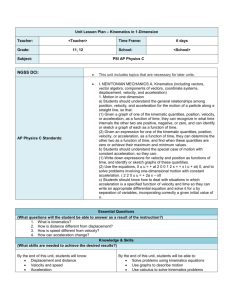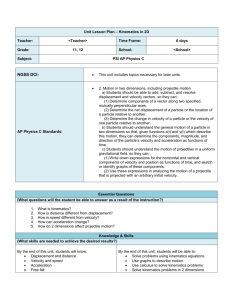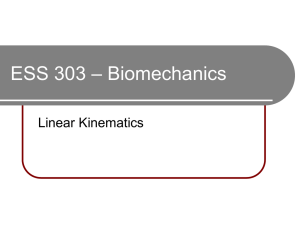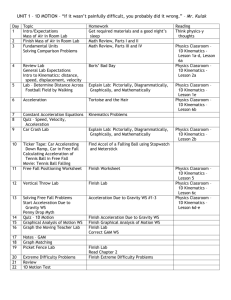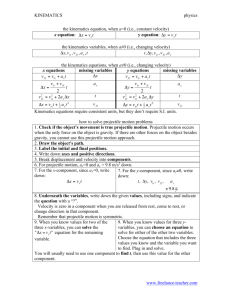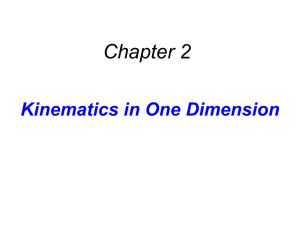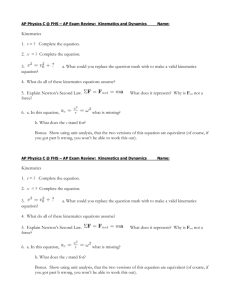Unit Lesson Plan * Atomic Structure
advertisement
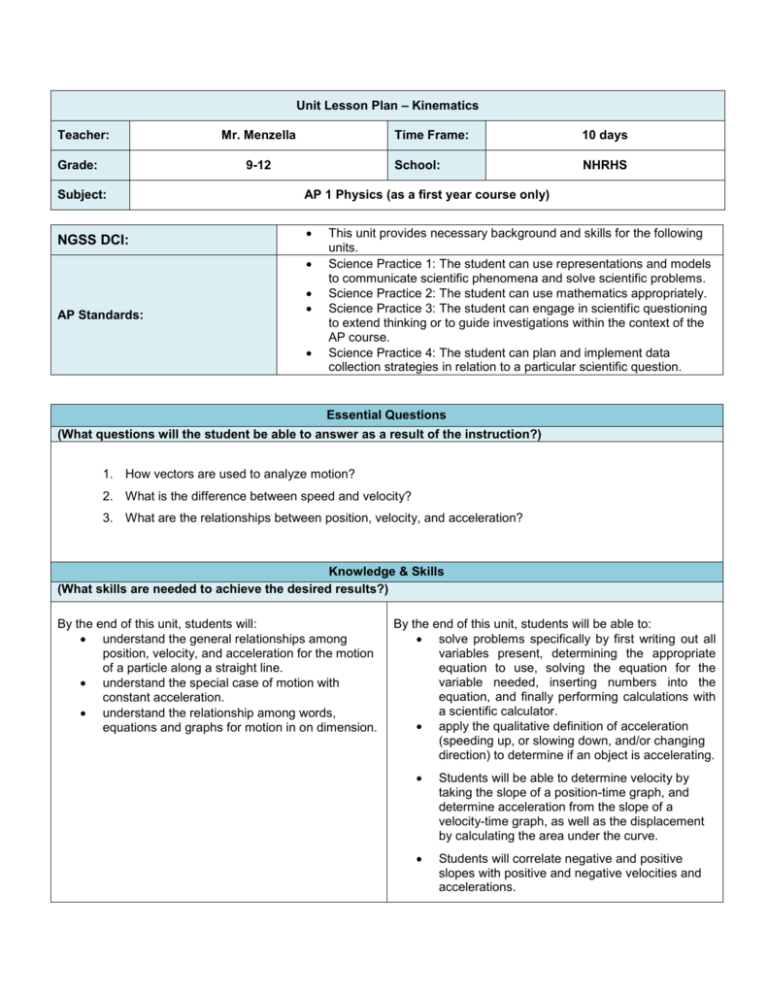
Unit Lesson Plan – Kinematics Teacher: Grade: Mr. Menzella 9-12 Subject: NGSS DCI: 10 days School: NHRHS AP 1 Physics (as a first year course only) AP Standards: Time Frame: This unit provides necessary background and skills for the following units. Science Practice 1: The student can use representations and models to communicate scientific phenomena and solve scientific problems. Science Practice 2: The student can use mathematics appropriately. Science Practice 3: The student can engage in scientific questioning to extend thinking or to guide investigations within the context of the AP course. Science Practice 4: The student can plan and implement data collection strategies in relation to a particular scientific question. Essential Questions (What questions will the student be able to answer as a result of the instruction?) 1. How vectors are used to analyze motion? 2. What is the difference between speed and velocity? 3. What are the relationships between position, velocity, and acceleration? Knowledge & Skills (What skills are needed to achieve the desired results?) By the end of this unit, students will: understand the general relationships among position, velocity, and acceleration for the motion of a particle along a straight line. understand the special case of motion with constant acceleration. understand the relationship among words, equations and graphs for motion in on dimension. By the end of this unit, students will be able to: solve problems specifically by first writing out all variables present, determining the appropriate equation to use, solving the equation for the variable needed, inserting numbers into the equation, and finally performing calculations with a scientific calculator. apply the qualitative definition of acceleration (speeding up, or slowing down, and/or changing direction) to determine if an object is accelerating. Students will be able to determine velocity by taking the slope of a position-time graph, and determine acceleration from the slope of a velocity-time graph, as well as the displacement by calculating the area under the curve. Students will correlate negative and positive slopes with positive and negative velocities and accelerations. Assessment (What is acceptable evidence to show desired results (rubrics, exam, etc.)? During the Smart Notebook lesson designed to introduce concepts, students will be continually questioned on these concepts using a combination of class work/homework questions. Classwork and Homework questions will be discussed as a class and misconceptions will be addressed by the teacher prior to the formal evaluations listed below. Kinematics Test (What is the sequence of activities, learning experiences, etc, that will lead to desired results (the plan)? Day 1 2 3 Topic Classwork Homework** Speed, Distance and Time + Average Speed Slides 1-45 Problems 1-8 Problems 9-28 MC 1-6 Slides 46-100 MC 16-21 & Problems 2934 Slides 101-131 Problems 35-41 Problems 42-49 MC 7-15 & 22-30 Position, Displacement and Velocity ∆𝑥 𝑣= ∆𝑡 Motion with a constant acceleration/first kinematics equation 𝑣 = 𝑣𝑜 + 𝑎𝑡 4 Bowling Ball Lab* Lab Lab questions/write up 5 Free Fall Slides 132-147 Problems 50-54 Problems 55-59 6 Second kinematics equation: Position vs. time 1 𝑥 = 𝑥0 + 𝑣0 𝑡 + 𝑎𝑡 2 2 Slides 148-158 Problems 60-76 MC 31-39 7 Stomp Rocket Lab* Lab Lab questions/write up 8 Third kinematics equation 𝑣 2 = 𝑣0 2 + 2𝑎(𝑥 − 𝑥0 ) Slides 159-171 Problems 77-110 MC 40-50 9 Three kinematics equations problem solving + Graphing Slides 172-192 Problems 95-103 Problems 95-130 10 www.njctl.org Kinematics Test Test 7th Grade PSI Review 2D Kinematics Presentation Matter and Energy Flow





